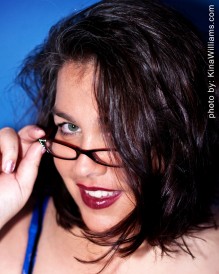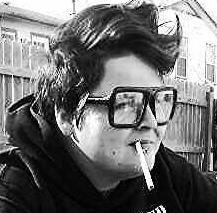Tight Places: Cozy or Uncomfortable?
By Kimberly Dark
I had a moment of judgment toward my potential seatmate as I walked up the airplane aisle and saw him. I wasn’t pleased to be having that feeling and there it was – immediate and unbidden. I was concerned I’d be uncomfortable sitting next to such a big guy on the airplane. Well, it was a short flight – Hilo to Maui. No need to get fussy. Better to get friendly.
He already had the seat divider lifted when I walked up the aisle and stowed my bag in the overhead bin. I pointed to the seat by the window and he quickly sprang to his feet to let me pass. At that point, I had only noticed his size. In memory, I see how quickly he moved to accommodate me, and how he smiled.
I put down the seat divider on my way in. It’s a matter of public decorum. I don’t want to make the assumption that we should be touching even though we will definitely be touching. The seat divider helps us, when we want to pretend its not happening. The divider helps contain my hip, which will push against it, and the person next to me. That tiny little seat divider, between two big people, is like staring up above the door in a crowded elevator. It helps you pretend you don’t know what the guy next to you had for lunch because his breath is so close to your skin.
It took only a moment or two; social interactions go one way or another so swiftly. He said, “Oh no, it’ll be easier if we put this up. Is that okay with you? Easier that way.” He was nodding and smiling and putting the seat divider up and I was nodding agreement and trying to push myself against the window. And he was positioning himself to wedge into the seat, find the seatbelt.
“We’re two big people.” I said with a chuckle and he relaxed into the seat, into the press of my body. We were shaped differently, so we fit nicely, definitely touching, pressing, wedged in, still strangers, touching, separate, together, no divider.
“Yeah, yeah. I always wonder how the athletes do it. Those kids at the university, they’re so big, those strong guys.”
I nodded. “Hawaiian Airlines is pretty good too, as the airlines go.”
He said, “Yeah yeah, I heard on Go! Airlines it’s tough. I’m Kalani.” He reached out his hand and we angled to shake as I introduced myself as well.
I can see the judgment on my seatmate’s face sometimes, especially if I’m already seated when he or she approaches. Sometimes the person is listening to headphones, or thinking other thoughts, and sometimes it’s clear. “Oh shit, I have to sit next to a fat lady on this flight.”
And I thought it too, consciously or not, as I approached Kalani, but what is the fear? Discomfort of course. And when I’m the one already in the seat as my travel companion approaches, the pain is the possibility of inconveniencing someone, invoking someone’s irritation just by being there.
Sometimes naming the problem helps. I know some who make jokes. My fat friend asks the flight attendant for a seat belt extender in a fully audible voice. “I’d like a seat belt extender and a LIGHT beer!” she declares jovially. I see others who’ve asked for the belt-extender so quietly I didn’t even hear them. Depending on the type of aircraft, I’ve needed the extender too, and I try to ask in the same tone I would request a cup of water. Some flight attendants hand it off like a cup of water, no fanfare, and no secrecy. Some slip it surreptitiously, like it’s shameful. This seems to be their training: don’t embarrass the customer.
We’re going to make contact. The flight is longer than an elevator ride, so we can’t just look at the numbers above the door rather than at each other. Still, there are set rituals on the airplane that help us pretend we are not in such close proximity. It’s not that the contact is much less comfortable, it’s that it ruins the illusion that we are really enjoying private space. Nothing private is happening in the space the airline sells us. The fat passenger dispels the illusion and this can cause anger – or maybe, in my case with Kalani, it can cause greater comfort.
He asked where I was headed and I told him Oakland. He told me he was on his way to Las Vegas for a high school reunion. Even though he’s from Hawaii, a group of five graduating years got together and planned this trip. He’s retired now – thirty-eight years as a heavy machinery operator and now he just enjoys life.
He asked about my trip, how long I’d be away, and why I was going. “Oh, you’re a storyteller,” he said with interest. “Sounds like good work. Sounds like you’re busy. That’s good!” He came to Hilo to build the Kamehameha School and fell in love with the place. He just didn’t go back to Oahu.
I coughed a bit during our conversation; he rustled in his bag and thrust a throat lozenge into my hand. “I was coughing earlier too. Take one.” We were in contact during the short “connecting” flight.
I noticed how relaxed it felt to simply accept that we were touching one another, no need for apologetic shifting, turning strangely away toward the aisle or window. No need for the isolation of a book or earphones. When we talked, we talked and when we didn’t, we just sat there, taking up space.
We talked of our kids, his oldest of three is thirty-eight and a major in the army. I smiled at the thought of Kalani starting his career with a wife and a new baby and he told me he’d also get to see his grandson in Las Vegas – his daughter lives there, too. He asked where I live and when I said I was down Kalapana way, he said, “Ah, by Uncle Robert’s?”
“One of my favorite neighbors,” I replied, and he smiled.
“I take groups out at night to see the lava when it’s flowing,” he said. “When Pu’u’o’o gets going again, we’ll be at it.” I raised my eyebrows, impressed. That’s a good walk and tough terrain at night.
“How long will you be in Vegas?” I asked.
“A month,” he said and, noting my surprise at the length of the visit, he added, “I play music too, so I got a lounge gig while I’m there. Sometimes I play down at Uncle Robert’s – at the Kava Bar.” When I asked what he played, he reported five or six different instruments.
“You may be retired from one job, but you’ve got a few more,” I laughed.
“Yeah yeah,” he said. “I got a good busy life too. So do you. We’re lucky.”
“Yes we are, Kalani,” said I.
And so we traveled, on the short flight from Hilo to Maui, connecting to other destinations to do our work and share our skills. We would connect to another airport where we would each sit in another plane – for many more hours. And again, we would each negotiate a small space with a seatmate who might believe we’re just a bit of bad luck. The fat seatmate is like the crying baby or the kicking toddler.
Or maybe the fat seatmate is worse, because sometimes people claim we shouldn’t fly at all. Some speak of us as though we’re lazy and inconsiderate and should get off our fat butts once in a while and do something with our lives. They find us pathetic and unattractive, not just a burden on the flight, but a burden to society as well.
But sometimes I’m lucky and get a seat next to a guy like Kalani, who knows that we are going to have contact, and he welcomes it. I’m not as bold as he, but I can aspire. I do much of what he did on that flight – I smile and look for pleasant conversation. I feel entitled to be there – and often, I try to take up less space. Kalani didn’t make himself small in anticipation of my disapproval. He accepted that he was going to be touching me, that we would be sharing an experience and his acceptance made me more comfortable as well.
Sure, I’m a body-rights activist and so I was poised to appreciate his approach. It’s possible someone else would’ve simply forgotten he was a big guy. They’d have remembered him as a nice guy. I thought he was that, and also a role model. Truly, no one should feel they have to put someone else at ease. We can all be doing our own work accepting the diversity of the human body in public places – and we can darned well keep our shortcomings to ourselves. Still, Kalani’s approach to proximity was a gift. Some of that gift was cultural, I’m sure. In Hawaiian culture, influenced though it has been by colonization and religion, fat people are not generally felt to be useless, lazy, or invisible as immediately as they are in white North American culture.
Kalani’s approach inspired me because comfort is what we lack. And it turns out that comfort isn’t about having enough space in your airplane seat – that’s something to take up with the airline if modifications are needed. Comfort is about ease within oneself and around strangers in public places. That includes all of the ways bodies show up with regard to size, age, race, gender, ability, and more. If we look closely, our discomfort on the airplane reveals something to us. We’re often uncomfortable around others and with ourselves. And that can change, even if the airline doesn’t sell us a bigger space in which to rest ourselves while we fly.
___________________________________________
 Kimberly Dark is a writer, mother, performer, and professor. She is the author of five award-winning solo performance scripts and her poetry and prose appear in a number of publications. For nearly fifteen years, Kimberly has inspired audiences in fancy theatres, esteemed universities, and fabulous festivals. The Salt Lake Tribune says “Dark doesn’t shy away from provocative, incendiary statements, but don’t expect a rant. Her shows, leavened with humor, are more likely to explore how small everyday moments can inform the arc of our lives.” The High Plains Reader in Fargo ND says “Dark’s skill as a storyteller gets to your heart by exposing hers.”
Kimberly Dark is a writer, mother, performer, and professor. She is the author of five award-winning solo performance scripts and her poetry and prose appear in a number of publications. For nearly fifteen years, Kimberly has inspired audiences in fancy theatres, esteemed universities, and fabulous festivals. The Salt Lake Tribune says “Dark doesn’t shy away from provocative, incendiary statements, but don’t expect a rant. Her shows, leavened with humor, are more likely to explore how small everyday moments can inform the arc of our lives.” The High Plains Reader in Fargo ND says “Dark’s skill as a storyteller gets to your heart by exposing hers.”


4 Comments